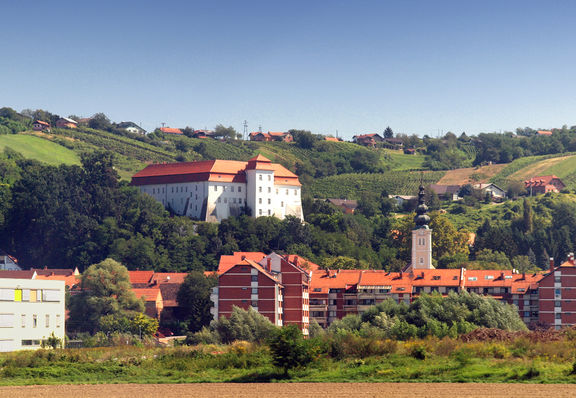Difference between revisions of "Lendava Castle"
| Line 52: | Line 52: | ||
[[Category:Monuments and sites]] | [[Category:Monuments and sites]] | ||
| + | [[Category:Castles]] | ||
Revision as of 19:21, 27 April 2010
History
The castle is first mentioned in the records in 1192 as a property of the Hungarian noble family Bánffy and was theirs until the middle of the 17th century, when it fell to Nádasdy family for a short period, and since the 18th century under the management of Eszterházy family.
Today it is a massive two-storey building with a mansard roof overlooking the Lendava town. The walls are supported by massive buttresses. The south-west façade is emphasized with a central tower.
Premises
The Lendava-Lendva Gallery and Museum was established within the castle in 1972. It houses several permanent exhibitions. The archaeological exhibition Oloris presents the late Bronze Age settlement Dolnji Lakoš pri Lendavi. The historical exhibition The Castle Lies in Wait [Grad na preži] informs us about the Turks’ invasions to the territory and presents the replicas of weapons and equipments of soldiers at that time. The numismatic exhibition, donated by the National Museum, Budapest, presents the development of Hungarian currency.
The memorial rooms are dedicated to György Zala (1858–1937) and Galič (1944–1997), the artists and natives of Lendava.
The castle is a spot for temporary exhibitions, as well as restoration workshops, which take place yearly under the supervision of the National Museum, Budapest, in order to restore as many museum items as possible in the ten days.
The Lendava-Lendva International Artists Colony and The Youth Fine Arts Colony Lind Art in organisation of the Lendava-Lendva Gallery and Museum take place yearly in the Lendava castle.
There is a smaller lapidary arranged in the hall, of the leftovers of the castle walls and three Baroque sculptures from Lendava neighbourhood. The oldest exhibit is a fragment of the castle walls dating in 1675, the most interesting but are the Baroque statue of John the Baptist and of St. Anne with Mary from the Lendava hills.



